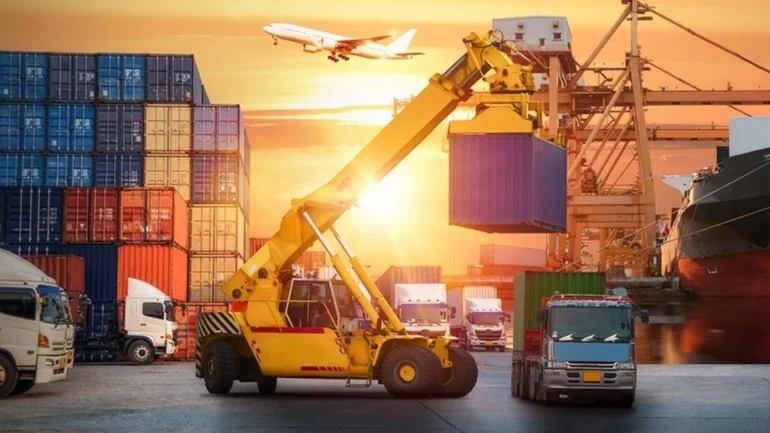If you run a logistics company, then you will already know how much of a headache it can be to manage your firm on a daily basis. Simply making sure that every process within your business functions correctly is a huge challenge that requires constant problem-solving and intelligent thinking to execute.
However, there comes a point where you will want to start growing your logistics business rather than stagnating at a certain level. After all, growth is crucial for ensuring your company continues to hone its internal processes, come up with more efficient ways of solving its problems, and, ultimately, generate more money.
Of course, if you are already struggling to keep your head above water at your current level, you might think it ridiculous to start pushing your company harder and take more risks.
In reality, this is exactly what you should consider doing. Not only does scaling help you spread the workload over a larger team, but it also means you will have more resources to deal with potential problems, deliver a better service, and source more customers. As a result, scaling – when it is done right – can actually make your life easier. How do you scale your logistics company? Well, this is what this guide will help you to understand.
Use a job board to find work

The fuel of any successful business is cash – and cash means customers. Without a steady flow of customers, your logistics business will wither and die, rather than thrive and grow, so it should be paramount to find more customers as soon as possible. There are many different ways to go about this, but in the logistics industry, you might want to start with sourcing shipping work on Shiply.
By going straight to the source, you can easily pick up more jobs, but this is only a short-term fix. What you then need to do is execute the jobs perfectly and create lasting relationships with your new customers. Your aim should be to drum up repeat, reliable business from these customers and rely on them to submit more orders as you try to scale.
Invest in more trucks
Of course, when you generate all these additional customers, you need to ensure that you can actually handle them all simultaneously. This will therefore require you to invest in more trucks, ships, or other infrastructure that you need – such as a larger warehouse to store your goods in. Naturally, you don’t want to buy all these additional resource if the demand is not there on a consistent basis, so acquire additional capital if and when you need it – one truck at a time if necessary. This will prevent you from becoming financially stretched or indebted if these additional customers suddenly dry up.
Be intelligent with your routes

Another top tip that you need to remember as you scale your logistics business is that growth is all about how easy and simple you can make every individual task within your company. Any resistance, slowdown, or friction you currently have within your logistics company will be amplified substantially as you grow, so you cannot afford to have any underlying inefficiencies.
Therefore, you need to start examining each stage of the logistics process and find ways of making it simpler, more efficient, and cheaper to execute. For instance, have a look at your route planning.
Depending on your company size, it may be wise to invest in the best truck app for iPhone and Android – they are usually designed to help you optimize the best routes possible and take into account different metrics like real-time traffic conditions. Logistic route planning is a crucial aspect of supply chain management and transportation logistics.
It involves the strategic selection and optimization of routes to efficiently transport goods from their origin to their destination, taking into account various factors such as distance, time, cost, capacity, and customer requirements. The goal is to minimize transportation costs, reduce delivery times, maximize resource utilization, and enhance overall operational efficiency.
Can you complete additional drops along your routes without taking much of a detour? It is these simple changes that can explode the progress of your logistics business at scale.
Train dedicated load staff to pack your trucks efficiently

Another aspect of the logistics process that you need to perfect is the loading stage. Without an efficiently packed truck, ship, or van, you are going to be unable to make as many drops as you otherwise could, which could result in more fuel being wasted, more customers being unhappy with longer delivery waits, and more deliveries waiting to be packed back at the warehouse.
Therefore, you need to ensure you have dedicated loading staff who are expertly trained to pack each load as efficiently, carefully, and quickly as possible. Without efficiency, there will not be enough packages on board. Without care, they will be broken (resulting in costly returns and complaints), and without speed, you will be unable to deliver as many orders as you otherwise could.
If you are currently struggling with inefficiencies at this stage, then ask your loading staff what they need to improve the process. Perhaps you could invest in forklifts or specialist loading technology to help improve the process, or maybe you need to organize the warehouse facility better.
Whatever the issue, make sure you work alongside your loading team to solve it.
Only scale when you have mastered your current service

The number one rule of scaling is that you shouldn’t attempt it until you have your current services nailed down. As we have already mentioned, scaling a business is like pressing enlarge on an image. If there are irregularities or discrepancies within the image, they will be instantly shown up once scaled.
The same is true of a business. If one of your internal processes is only completed by bodging each job or by pure luck, then you will stand no hope of scaling your logistics business sustainably. Instead, you must stress test each process at your current company size and ensure that they are ready to be reproduced at scale.
Partner up with other logistics companies

Lastly, when you scale, you may need to use additional resources that are simply out of your realistic budget. For example, if you need to ship goods across the world, then you are unlikely to have the resources to purchase the ship outright.
Instead, partner with businesses who own those services, and build it into your service costs. That way, you have the available resources of a far larger firm with none of the costs attached.
